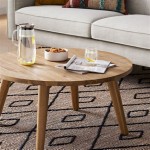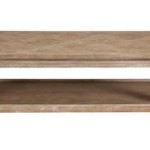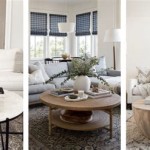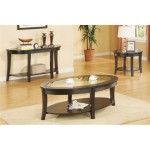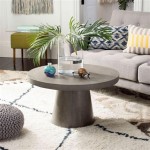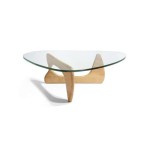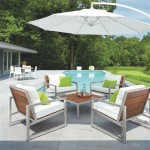The Allure and Craft of Live Edge Wood Coffee Tables
Live edge wood coffee tables have surged in popularity, becoming a sought-after centerpiece in contemporary and rustic-chic interior design. This furniture style distinguishes itself by incorporating the natural, untouched edge of the wood slab, showcasing the tree's original form and character. The unique aesthetic appeal, combined with the inherent durability of wood, makes live edge coffee tables a desirable investment for discerning homeowners and design enthusiasts.
The selection process for creating a live edge coffee table is meticulous, beginning with the sourcing of suitable wood slabs. These slabs are typically sourced from mature trees, often those that have fallen naturally or are being removed for safety reasons or land development. The species of wood used significantly impacts the table's final appearance and durability, with popular choices including walnut, maple, oak, cherry, and redwood, each offering distinct grain patterns and color variations.
Once a suitable slab is acquired, it undergoes a rigorous drying process, often involving kiln drying, to reduce the moisture content and prevent warping or cracking. This crucial step can take weeks or even months, depending on the thickness and species of the wood. After drying, the slab is carefully examined for any remaining imperfections or areas requiring stabilization. Resin fills are often used to reinforce cracks or voids, adding both structural integrity and visual interest. The final shaping and finishing processes further enhance the table's beauty and ensure its longevity.
Highlighting Natural Beauty and Uniqueness
The primary appeal of a live edge coffee table lies in its celebration of natural beauty. Unlike manufactured furniture with uniform lines and predictable patterns, each live edge table is inherently unique. The irregular edge, with its curves, knots, and variations in texture, tells a story of the tree's life and growth. These imperfections are not seen as flaws but rather as defining characteristics that contribute to the table's individuality and artistic value.
The natural edge provides a tactile and visual point of interest, inviting interaction and admiration. The grain patterns, often accentuated by the finishing process, can range from subtle and understated to bold and dramatic, depending on the species and cut of the wood. These patterns create a sense of depth and movement, adding visual complexity to the table's surface. Furthermore, the live edge often retains remnants of the bark or sapwood, further emphasizing the connection to nature.
Designers often incorporate the live edge as a focal point, allowing the natural contours to dictate the table's overall shape and proportions. The legs or base are then carefully chosen to complement the organic form of the wood, creating a harmonious balance between natural and man-made elements. The result is a piece of furniture that serves as both a functional surface and a sculptural work of art.
Understanding the Manufacturing Process
The creation of a live edge coffee table involves a series of intricate steps, demanding skilled craftsmanship and attention to detail. The initial step involves selecting a suitable wood slab with the desired live edge characteristics. Factors considered include the size, shape, species, and overall condition of the wood. The slab is then carefully assessed for any structural weaknesses or imperfections that need to be addressed.
The drying process is crucial for ensuring the stability and longevity of the table. Kiln drying is the most common method, involving placing the wood in a controlled environment where temperature and humidity are carefully regulated. This process gradually reduces the moisture content of the wood, minimizing the risk of warping, cracking, or other forms of distortion. The drying process can take several weeks or even months, depending on the thickness and species of the wood.
After drying, the slab is carefully sanded to smooth the surface and prepare it for finishing. The sanding process typically involves multiple passes with progressively finer grits of sandpaper, resulting in a smooth and even surface. Any cracks or voids are then filled with resin, often tinted to match the color of the wood or to create a contrasting accent. The resin is allowed to cure completely before being sanded flush with the surrounding wood.
The finishing process is crucial for protecting the wood and enhancing its natural beauty. Various types of finishes can be used, including oils, waxes, varnishes, and lacquers. The choice of finish depends on the desired look and level of protection. Oils and waxes provide a natural, matte finish that highlights the wood's texture, while varnishes and lacquers offer a more durable and glossy finish. The finish is typically applied in multiple coats, with light sanding between each coat to ensure a smooth and even surface.
Finally, the legs or base are attached to the slab. Various types of legs can be used, including metal, wood, or even stone. The legs are typically attached using screws, bolts, or other fasteners. The finished table is then inspected for any imperfections or areas requiring further attention. The final product is a unique and beautiful piece of furniture that showcases the natural beauty of wood.
Selecting the Right Wood Species
The choice of wood species is paramount when considering a live edge coffee table, as it significantly impacts the table's aesthetic, durability, and overall cost. Each species possesses unique characteristics in terms of grain pattern, color, hardness, and susceptibility to environmental factors. Understanding these differences is crucial for making an informed decision.
Walnut is a highly prized hardwood known for its rich, dark brown color and intricate grain patterns. It is relatively hard and durable, making it suitable for furniture that will withstand daily use. Walnut is often considered a luxury wood, and live edge walnut coffee tables can command a higher price point due to the scarcity and desirability of the material.
Maple is another popular choice, offering a lighter color palette ranging from creamy white to pale yellow. Maple is a dense and hard wood, making it highly resistant to scratches and dents. Its fine, even grain pattern provides a clean and contemporary look, making it a versatile option for various interior design styles. Curly maple, also known as tiger maple, features a distinctive wavy grain pattern that adds visual interest and character.
Oak is a classic hardwood known for its strength and durability. It is available in a range of colors, from light tan to reddish brown, and features a prominent grain pattern. Oak is a relatively affordable option compared to walnut or maple, making it a practical choice for budget-conscious buyers. White oak is particularly resistant to moisture and decay, making it suitable for areas with high humidity or potential spills.
Cherry is a hardwood known for its warm, reddish-brown color and smooth texture. It is relatively soft compared to oak or maple, but it is still durable enough for use in coffee tables. Cherry develops a rich patina over time, deepening in color and enhancing its natural beauty. Its elegant and refined appearance makes it a popular choice for traditional and transitional interiors.
Redwood is a softwood known for its reddish-brown color and exceptional resistance to decay and insects. It is a lightweight wood, making it easy to move and handle. Redwood is often sourced from reclaimed trees, making it an environmentally friendly option. Its rustic and natural appearance makes it a popular choice for outdoor or casual living spaces.
Beyond the species, the specific cut of the wood also affects the appearance. A slab cut across the trunk (end grain) will reveal a different pattern than one cut lengthwise (long grain). The presence of knots, burls, or other imperfections adds character and uniqueness, but can also affect the structural integrity of the table. Carefully consider the desired aesthetic and functional requirements when selecting the wood species and cut for a live edge coffee table.

Black Walnut Live Edge Wood Coffee Table

Live Edge Wood Coffee Table Black Walnut Farmhouse Finland

Flophouze Container Hotel Live Edge Coffee Table

Nakashima Style Live Edge Coffee Table Stockton Heritage

Coffee Tables Live Edge Wood And Furniture Serving The Greater Seattle Region Elpis

Diy Live Edge Coffee Table And Unique Elements In Home Decor Wood Mid Century Modern

Live Edge Coffee Table Back At The Ranch Furniture

Sofia Live Edge Coffee Table Walnut

How To Incorporate Live Edge Wood Decor In Your Home

Coffee Tables Live Edge Wood And Furniture Serving The Greater Seattle Region Elpis
